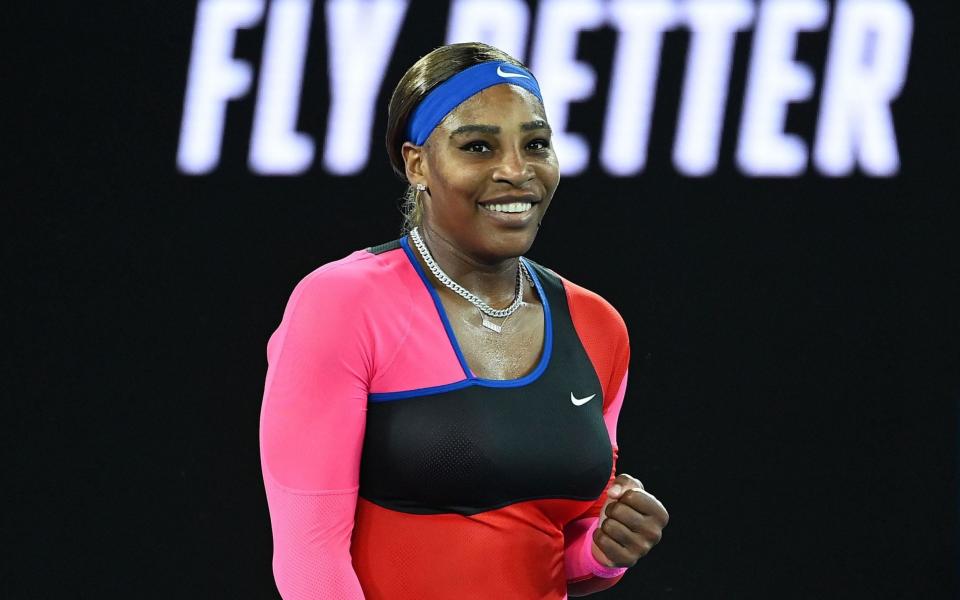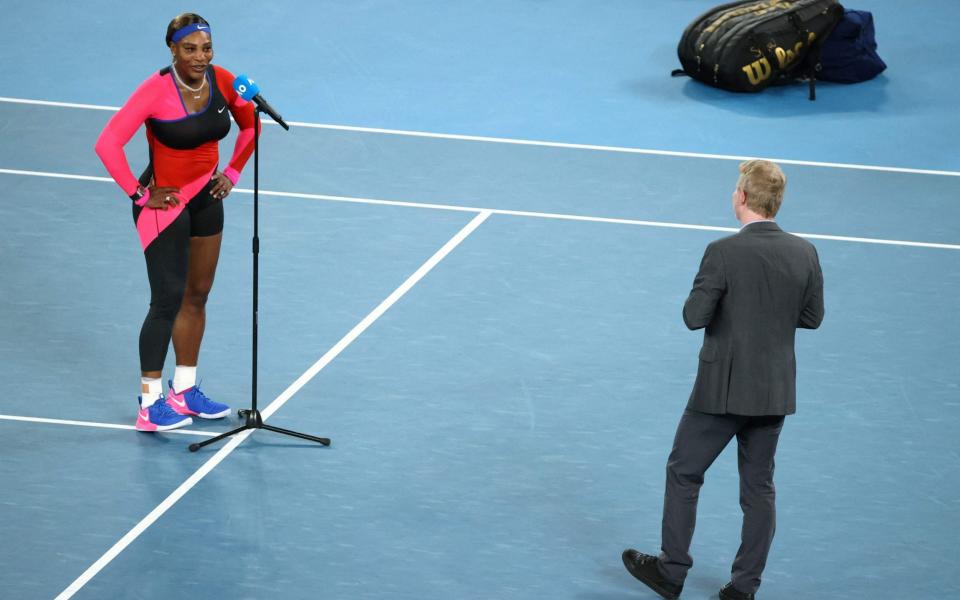Serena Williams's improved movement could be key to chasing down elusive 24th grand slam title

Serena Williams powered into her 40th grand slam semi-final on Tuesday by beating arguably the best defender in women's tennis at her own game.
Simona Halep usually frustrates opponents with her ability to reach would-be winners - she did so in their last meeting with a near-faultless 6-2 6-2 demolishing of Williams at the Wimbledon 2019 final. But on Tuesday Williams turned the tables by finding an answer for every one of the Romanian's attempts to grind her down, and displaying the significant improvement in her on-court movement which has turned heads in Melbourne.
Defensive work and speed were strengths Williams was once known for - footwork to marvel at and covering the court with ease. But since returning from the birth of her first child in 2017 it has been a weakness preyed upon by her opponents. "If they can get Serena moving around, they will have a chance here," has so often been the musing of commentators, as challengers successfully targeted Williams's sometimes laboured lunging or awkward flat-footedness.
This Australian Open has been a different story though. The 39-year-old has been explosive, chasing down balls to keep points alive, and clinching longer rallies where she previously would have run out of steam. Against Halep, it gave her more time for decision-making to hit ruthless winners - 24 in total - later on in points and ease to a 6-3 6-3 win.
When asked post-match how long it had been since she felt those longer rallies were hers to win, Williams was in a jovial mood: "It's definitely been a minute. It's been a long minute. I think the summer of 1926 was the last time I felt that."
But this shift in Williams's game is no laughing matter for her opponents, and she knows it. She nodded enthusiastically when on-court interviewer Jim Courier admired her defensive work in the aftermath of her win: "Last year my coach Patrick [Mouratoglou] had a long talk with me about how I needed to be better on defence."
"I know throughout my career speed has been one thing that’s been super good in my game. Sometimes I’m getting points and getting balls and I know I have the legs to do it. So it’s exciting."

Halep was not at her best on Tuesday. From the first point she served, which Williams dismissed by pummelling a forehand winner, she looked on the back foot and frustrated. While Halep's confidence was shaky and she never found her rhythm, Williams's new-found speed and resilience is contributing to her looking more relaxed than she has in years, as she nears closer to that elusive record 24th grand slam title.
While the pressure to deliver another trophy has weighed heavy in the past, losing four major finals since her last win at the 2017 Australian Open, Williams has found confidence in knowing she has a more complete game in Melbourne.
With the added cushion her movement allows, she is no longer all-reliant on that famous serve to get her out of trouble. While her unforced error count ticked into the danger zone at 33 and her serve was nowhere near its best on Tuesday - hitting just four aces, only 55 per cent of her first serves in and being broken three times by Halep - she still emerged the victor. It was a similar story on Sunday when she defeated fellow heavy-hitter Aryna Sabalenka, and on neither occasion did she look too rattled.
"When you're not in a good day, you need a plan B, and to be able to have a plan B, you have to be able to move well," her coach Mouratoglou said ahead of the match. "I think it cost [Williams] a few important matches [in the last two or three years]. So we have decided to find a way to bring back the footwork that she used to have in the past."
It will no doubt help in the semi-final, where Williams faces Naomi Osaka after she defeated Hsieh Su-wei in straight sets 6-2 6-2 earlier on Tuesday. It will be the toughest mental test of the tournament for Williams and the pair's first meeting at a major since their infamous 2018 US Open final, when Williams's on-court disagreement with the chair umpire dominated proceedings before Osaka emerged the victor.
But the American is no longer the outright favourite these days, Osaka and Ash Barty are vying for that honour. With Osaka's growth in profile in the past year after picking up her third major title in New York, and the pressure on Barty to deliver Australia's first homegrown singles champion since 1978, Williams has navigated the first nine days of the tournament relatively under the radar - or as under the radar as a 23-time champion in a one-legged catsuit can.
Her breezy demeanour suggests it is helping, and if she keeps up the pace on the court, No 24 could well be within reach.

